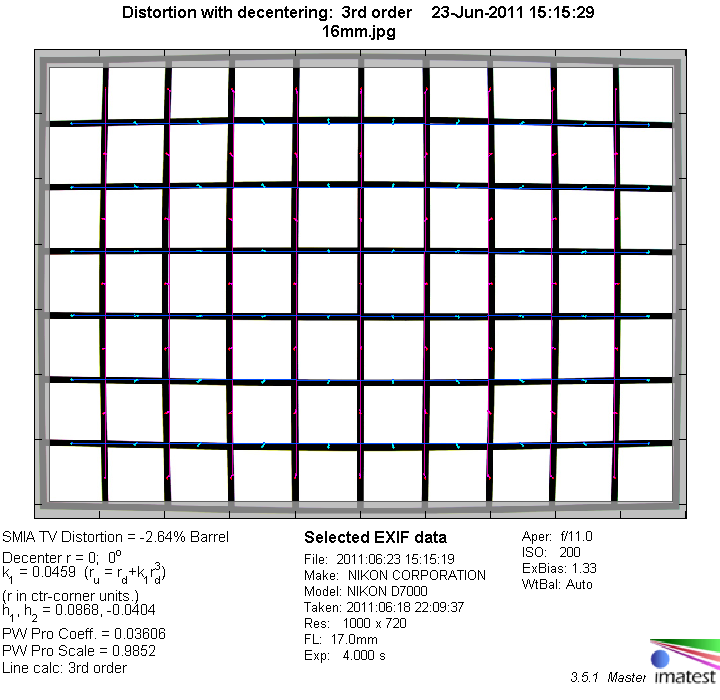|
Tokina AF 16.5-135mm f/3.5-5.6 AT-X DX - Review / Test Report - Analysis |
|
Lens Reviews -
Nikon / Nikkor (APS-C)
|
|
Page 2 of 3

Distortion
The Tokina produces significant barrel distortion at the wide end, which has flipped over to the pincushion type at 28mm already. The amount of pincushion distortion is quite high throughout most of the zoom range.
|
Move the mouse cursor over the focal length text marks below to observe the respective distortion
|
| 16.5mm |
28mm |
50mm |
80mm |
135mm |
|

|
The chart above has a real-world size of about 120x80cm.
Vignetting
The lens produces hefty vignetting at the short end wide open and needs to be stopped down here to f/8 to reach an acceptable level of light falloff towards the corners. At all other focal lengths, especially the medium range, vignetting is not really a field-relevant issue.

MTF (resolution)
The lens delivers very mixed results across the zoom range. The center resolution is generally very good to excellent, with a general tendency of lower resolution towards the long end of the focal range.
The borders and corners deliver good to very good resolution at most apertures at the wide end and also at medium focal lengths. At 28mm however both are very weak, the corners wide open even so poor that they don't fit our MTF scale. The lens needs to be stopped down to f/8 to reach acceptable sharpness here.
The situation is similar at the long end, however even stopped down both borders and corners don't really convince and deliver less resolution than at any other focal length.
Please note that the MTF results are not directly comparable across the different systems!
Below is a simplified summary of the formal findings. The chart shows line widths per picture height (LW/PH) which can be taken as a measure for sharpness.
If you want to know more about the MTF50 figures you may check out the corresponding Imatest Explanations

Chromatic Aberrations (CAs)
The level of lateral CAs (color shadows at harsh contrast transitions) is very high towards both ends of the zoom range, reaching peak values of more than 3 pixels. At 50 and 80 mm the amount of CAs is significantly lower.
However, CAs can easily be corrected in software or by the camera itself (most modern Nikon DSLRs remove CAs themselves if you shoot JPGs).

|